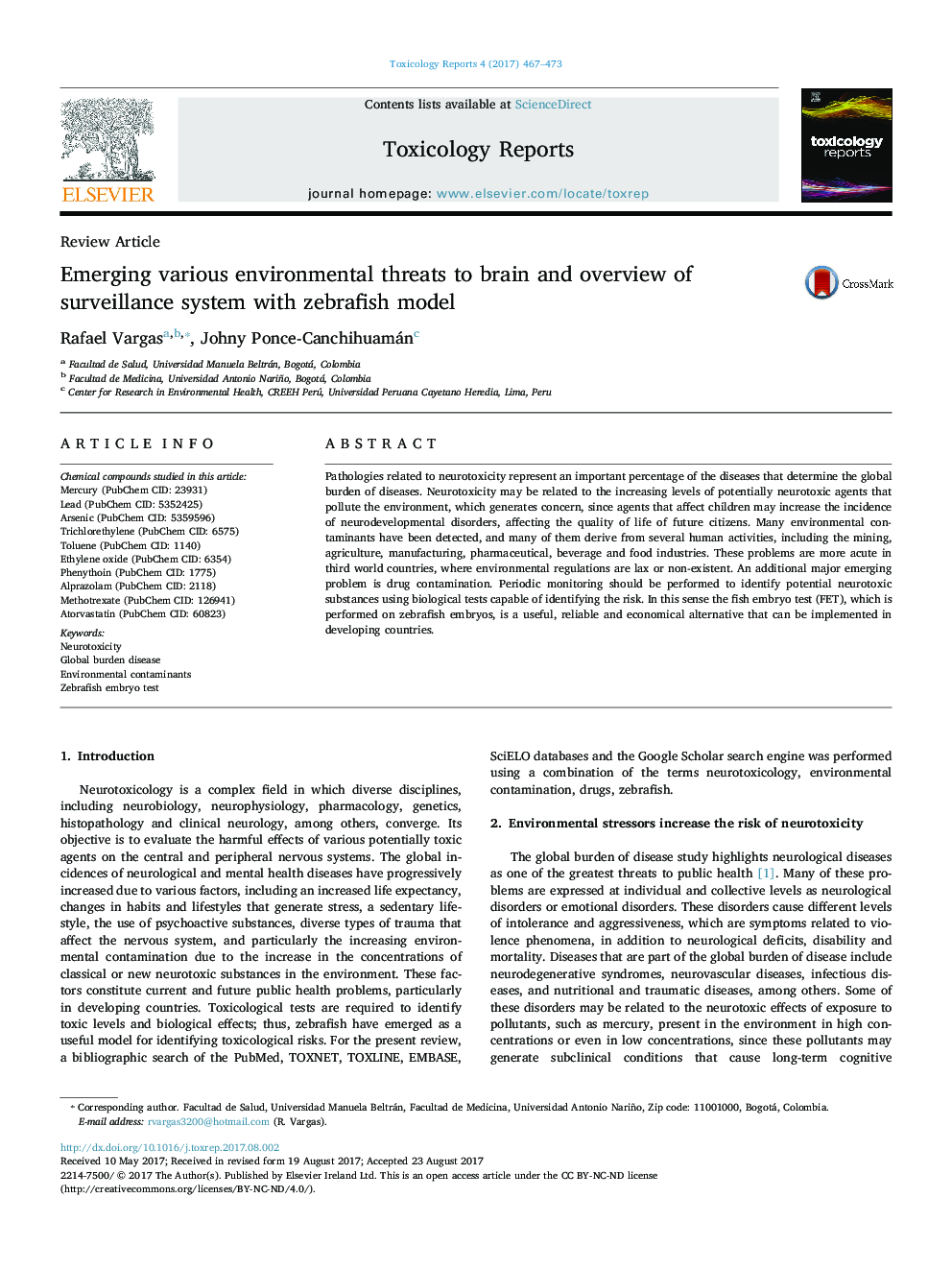| Article ID | Journal | Published Year | Pages | File Type |
|---|---|---|---|---|
| 5558693 | Toxicology Reports | 2017 | 7 Pages |
â¢Neurotoxicity represent an important percentage of the global burden of diseases.â¢Environmental stressors increase the risk of neurotoxicity.â¢Toxicological tests are required to identify toxic levels and biological effects.â¢Zebrafish model is a tool for studying Environmental factors-driven neurotoxicity.
Pathologies related to neurotoxicity represent an important percentage of the diseases that determine the global burden of diseases. Neurotoxicity may be related to the increasing levels of potentially neurotoxic agents that pollute the environment, which generates concern, since agents that affect children may increase the incidence of neurodevelopmental disorders, affecting the quality of life of future citizens. Many environmental contaminants have been detected, and many of them derive from several human activities, including the mining, agriculture, manufacturing, pharmaceutical, beverage and food industries. These problems are more acute in third world countries, where environmental regulations are lax or non-existent. An additional major emerging problem is drug contamination. Periodic monitoring should be performed to identify potential neurotoxic substances using biological tests capable of identifying the risk. In this sense the fish embryo test (FET), which is performed on zebrafish embryos, is a useful, reliable and economical alternative that can be implemented in developing countries.
Graphical abstractDownload high-res image (148KB)Download full-size image
